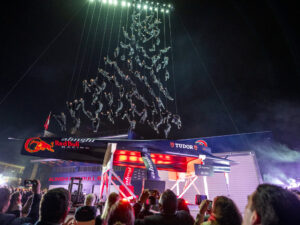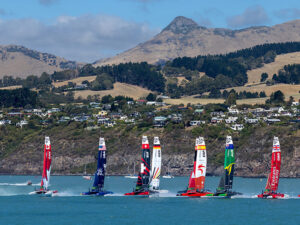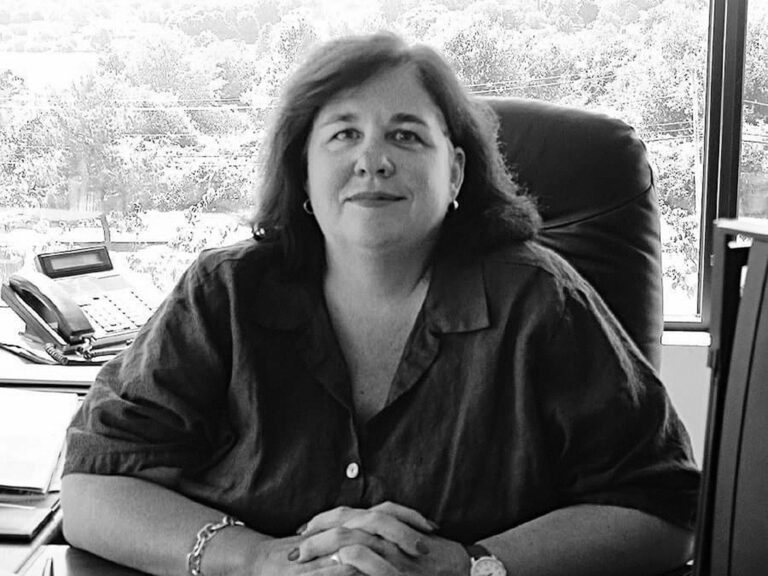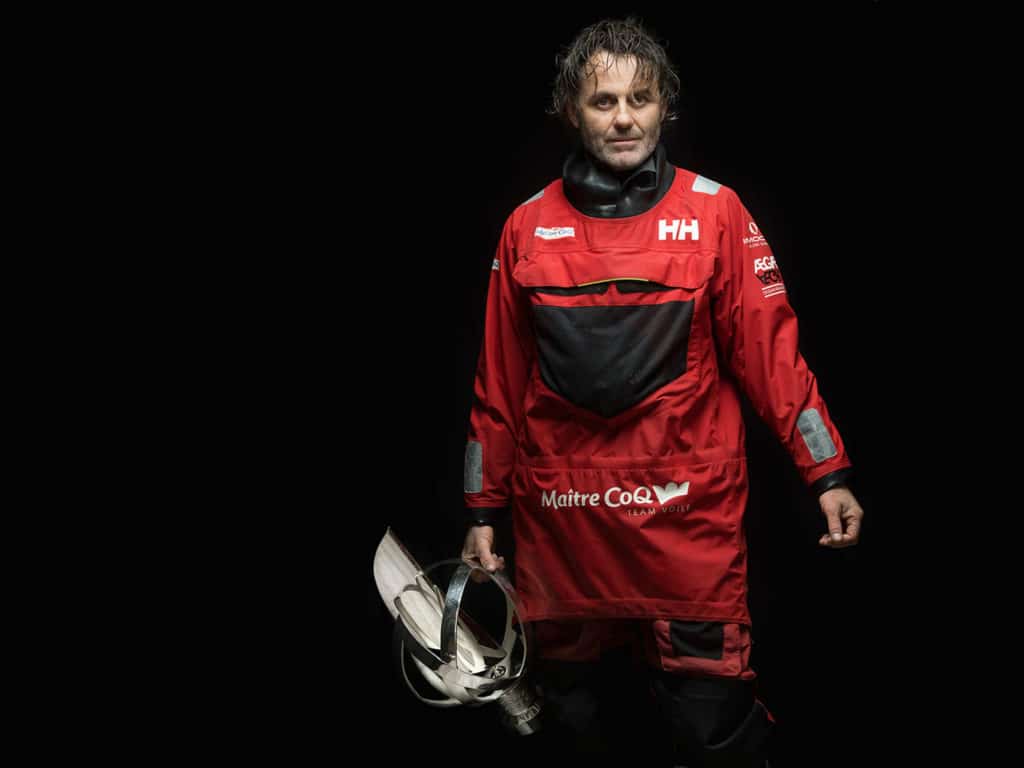
“My boat is sinking. This is not a joke! MAYDAY.”
This text message from PRB skipper Kevin Escoffier to his shore team was made seconds before he was forced into his survival suit, then his life raft, after his IMOCA 60 racer folded in half 640 miles southwest of Cape Town. Not good, and potentially very bad. Escoffier later said he never doubted he would be rescued from his raft, but there was a lot more doubt in the mind of the legend Jean Le Cam. Racing his fifth Vendée Globe, Le Cam was the most experienced racer in the fleet. As it happened, he was the closest of the four boat that were summoned by Race Control to PRB’s last know position, after calculating for drift. Le Cam sailed 40 miles to the spot, and actually made visual contact with Escoffier’s orange life raft. He managed to tack and pass close to the raft, but it was very rough, and getting dark, and Le Cam did not yet have a clear plan of how to execute the rescue. Over the next 6 hours of darkness, he made a plan in his mind for how to approach the drifting raft. The only problem; nobody knew exactly where the raft was anymore, probably because Kevin had turned off his AIS to save battery. Again, the calculations for drift from France helped Le Cam eventually find the raft again at 2AM in the morning, with the help of a full moon.
By his own admission, Le Cam did not judge the timing exactly right as he luffed up next to Escoffier, but he managed to throw a heaving line, and incredibly the rescue was a success. Le Cam pulled Escoffier to his boat and helped him over the transom, after 12 hours in his life raft.
Le Cam resumed racing his “Yes We Cam” IMOCA 60, and Escoffier went down for a meal and sleep. Four days later, Escoffier was transferred to French Navy frigate, then to Reunion Island, and eventually halfway around the globe and back to Paris. He is plotting his revenge with his sponsor, hoping to come back and win the Vendée in 2024.
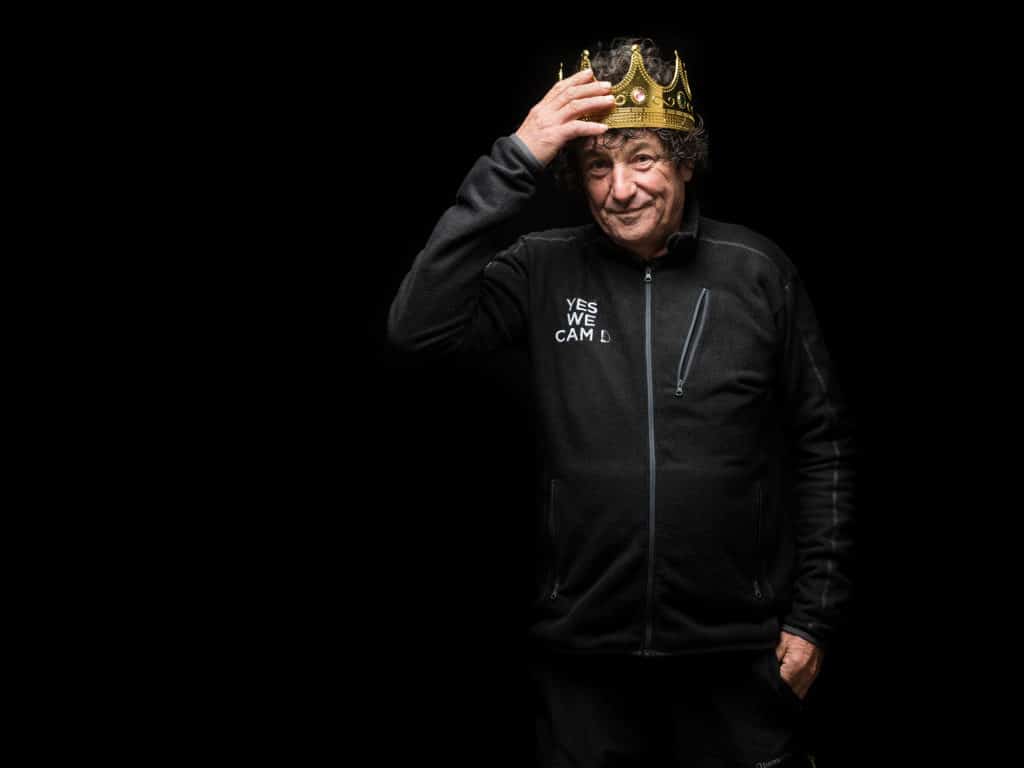
As the fabled Vendée saying goes, “In order to win, first you must finish,” which is not a trivial statement of this race. The typical attrition rate of around 50 percent over the 27,000 miles. Jean Le Cam’s “Yes We Cam” finished the race in fourth place. Not bad for an older boat, sailed by a 61-year old timer, who completed a heroic rescue in the deep Southern Ocean. This may be his last go around. But then again, maybe not.
A week later, it was Charlie Dalin’s incredible emergency repair that was big news. At the front of the pack with Thomas Ruyant and Yannick Bestaven, Dalin’s yellow Apivia was literally flying through the deep Southern Ocean when a loud crack meant trouble. He immediately slowed and was able to determine that the bearing that supports his port foil where it exits the hull was missing. This would be an immediate race ender and possibly a deploy-the-raft situation for most normal humans. But Dalin managed to stop the leak and continue limping along while he consulted his shore crew (legal for technical issues). Together they devised an elegant but very hard-to-execute plan that could possibly save their race. Using a battery powered grinder and a pattern sent electronically to the boat from France, Dalin cut out carbon shims to shove into the space where the bearing used to be. He would have to retract most of the foil, but maybe it would be secure enough to hold it in place? It seemed an incredible long shot.
The next morning, Dalin tacked to port (away from the finish) to get the port foil mostly out of the water. Over the next five hours, he suspended himself over the topsides to the waterline with a halyard, and attempted to jam the shims into position. Dalin estimates he made between 20 to 30 trips over the side. Finally, he had done all he could, and he tacked back to resume racing, now 170 miles behind the leaders. Amazingly, the repair held, with some later tweaks, for the next 15,000 miles to the finish, surely a notable chapter in the history of maritime McGyverism.
Fortunately for Dalin, there were minefields ahead for the leading boats and he was able to get back in touch. Unfortunately, much of the rest of the race was starboard tack, where he was hampered with a faulty foil. But he sailed an incredibly disciplined course, always going as fast as he safely could, while managing tactical risk, even when he could be going 3 knots faster at times with a working foil. You have not heard the last of Dalin, he is now a household word in France and throughout the ocean sailing world.
Sam Davies’ Vendée story is both sad and inspiring. She has steadily worked for years to create a top IMOCA program, and this year she had shown promise. Again, the cruelty of the South Atlantic showed its ugly face. While blasting toward the roaring forties off Cape Town, Davies’ keel hit a UFO and her “Initiative Coeur” came to a stop. “It was like hitting a rock” Davies later said. She broke some ribs from the collision, but worse news were the cracks in the longitudinal bulkhead supporting the keel. Race over. I cannot imagine the feeling of disappointment in the moment. But of course, she effected emergency repairs and made arrangements to meet her shore team in South Africa. Three days later, she arrived, and the technicians were ready to start the repair. The Vendée Globe rules are very clear: no outside assistance is allowed. So, once her shore team stepped on her IMOCA, her race was over. But wait. Davies’ sponsor is a children’s charity, and they were raising money based on how many miles she sailed. So, she made the bold decision to go back to sea, sailing “hors course”, back to the Southern Ocean with all its charms, on to Cape Horn and up the Atlantic to France. Davies was out of the race, but she would finish the course anyways, for her sanity, for her sponsor, for the spirit which is the Vendée. She is still at sea as I write this, winning hearts and helping kids. “At first I thought I was going to die, then that I have to stop sailing in Cape Town”. But then I thought, “This is stupid, this is nonsense to stop sailing, I don’t want to do that!”.
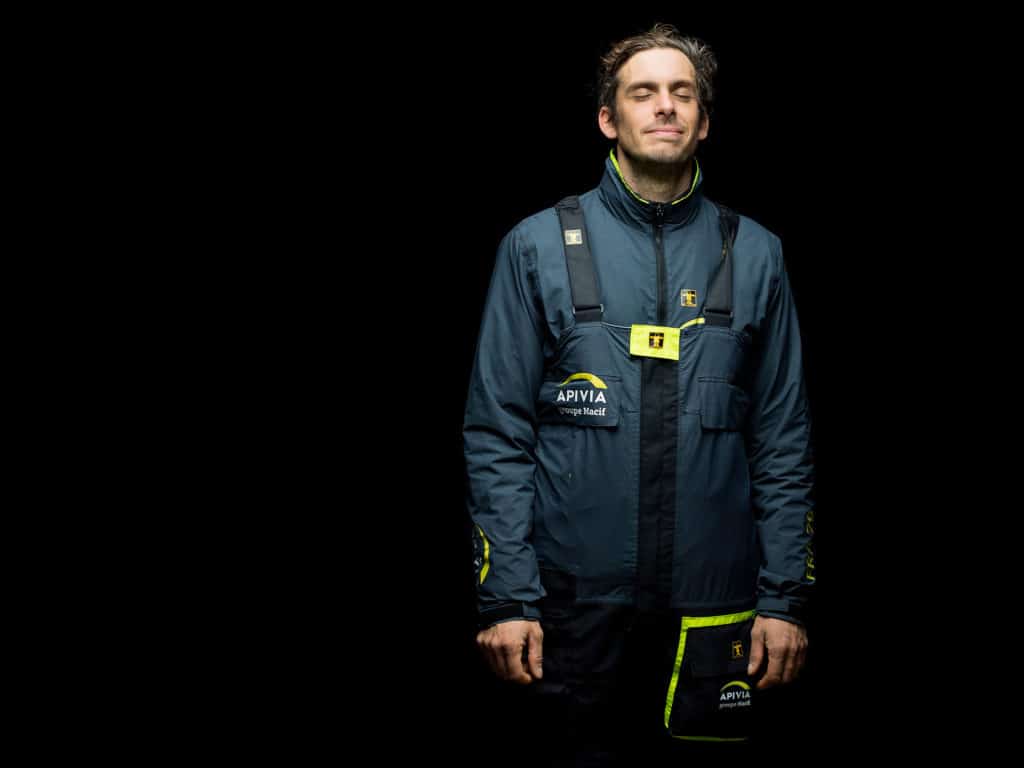
Yannick Bestaven is not a familiar name American sailing household, even though he has won the Mini-Transat in 2001 and twice won the Transat Jacque Vabre. He dreamed of being a Vendée sailor, and he fought hard to develop the skills and the money. It all seemed to come together for Bestaven before the 2008 Vendée, where he arrived at the start with a good boat and ready to go. But on the first night of the race, Bestaven’s mast broke, and with it all his sailing dreams. He limped back through the heartless Bay of Biscay to home, vowing to quit sailing and get a normal job. He was an engineer and entrepreneur for a few years and settled down in his home of La Rochelle. But something was missing, and in 2016 he started to sail again, now in the Classe 40. Quickly, he got back to speed, and within two years was atop the Classe 40 scene. Then, the opportunity came from sponsor Maitre Coq to race the Vendée again, and Yannick had to say yes. It was a 2015 boat, so not the newest, but a proven design with smaller “Dali” foils. In this year’s race, “Maitre CoQ IV” sailed pretty cautiously through the early storms, but was not far from the front peloton. Bestaven was asked by Race Control to stand by in the rescue of “PRB”, and after all that he was 400 miles behind the leaders. As the action moved to the Southern Ocean, Bestaven started to really catch fire. He made 2 brilliantly timed jibes while the leaders were experiencing light air. Then he navigated very close to the Antarctica Ice Exclusion Zone and made further gains by pushing very hard to stay ahead of a big westerly front. He took the lead and never looked back, all the way to Cape Horn, where he rounded 15 hours ahead on Dalin, and 22 hours ahead of Ruyant. Then he made what seemed a brilliant move up the coast of Argentina, stretching out to a 434 mile margin. Then, all the effort fell apart. He sat becalmed while all his rivals sailed right up to him. A complete restart with 8,000 miles to go! 5 boats were within 30 miles, with another 4 a further 80 miles back.
But far from done, Bestaven continued to attack the course tactically, and push hard on his older steed. He initially lost with his westerly position through the doldrums, but made a bold move north after that, passing north of the Azores. This set him up to be the first to catch a big North Atlantic front, which he rode all the way to the finish. After all that, “Maitre CoQ IV” crosses the line third, eight hours after Dalin and four hours after Louis Burton. But because Yannick had diverted course and slowed to aid in the rescue of Escoffier, the jury had previously awarded him 10 1/4 hours credit, which was enough to give him the win by 2.5 hours. Incredible. Onshore, he hugged Dalin, and suggested that this time there were really two winners of the Vendée!
These are the modern seafarers, exhibiting a level of skill, seamanship, and preparation that actually makes the Vendée not crazy. Just imagine, sailing along at 20 knots on a foiling roller coaster, trying to find the right sail plan, the right trim, the right angle, to go fast but not so fast that you break the boat. This is stressful in the best of times, but these men and women are navigating around the world singlehanded. They sleep when they can, sometimes not much when conditions are tough. They do their own weather analysis and their own routing, plus they have to do all the sail changes and reefing solo. Not to mention the inevitable repairs and jury rigs.
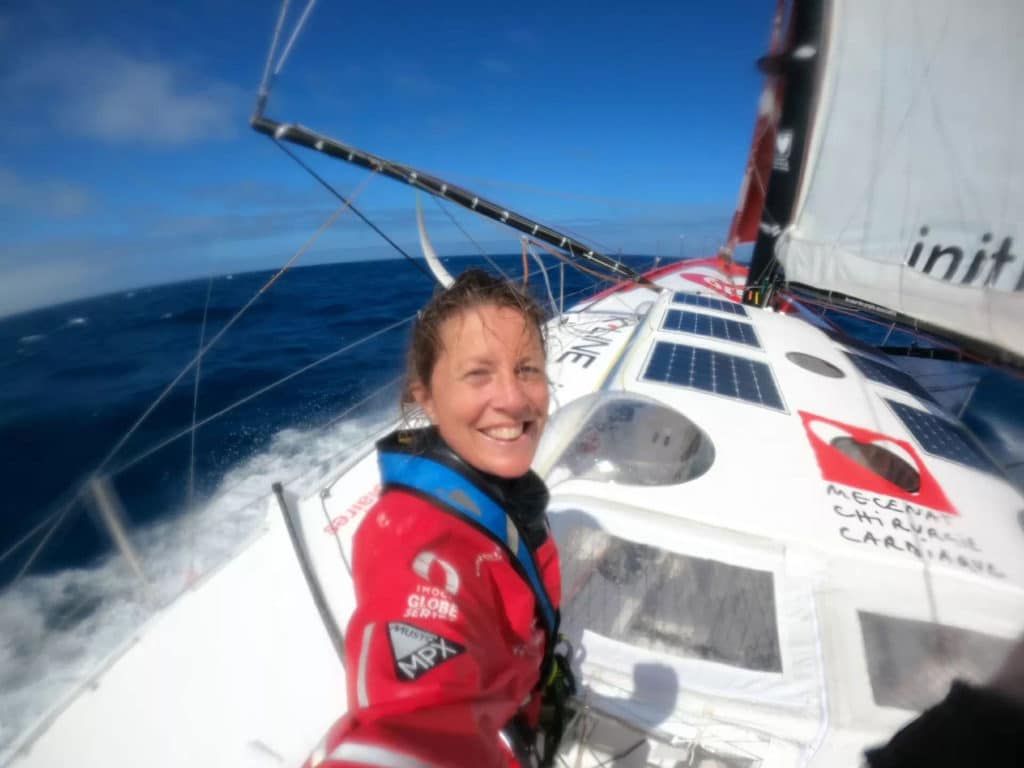
Yes, having a good autopilot helps tremendously, in fact it allows the sport to happen at this level. But the stress is ongoing and sometimes extreme. The sailors are trying to find that balance of top performance and sustainability, being able to keep going day after day.
Why do I idolize these crazy offshore argonauts? I have asked myself this question for years, without a good answer, except that they represent a sort of human ideal as expressed through a sailboat. An ultimate manifestation of sailor and sailboat coming together to cross the ocean, to race across the ocean, that I find compelling and somehow reassuring. Yes, there is risk, and sometime bad things happen. None of these sailors seek out risk for its own sake, but as a price that can be managed, part of the task of efficiently sailing the boat around the world.
The stress is often evident in the communications from the sailors during the race. You can see it in their eyes and hear it in their voices. But as the race goes on, a certain calmness and peace also seems to find the Vendée sailors. They become one with their boat, but they also become one with their environment, and it seems that some find a peace that comes from doing the very best you can, day after day. But I have to think that the first steaming shower back on shore feels pretty good too!



